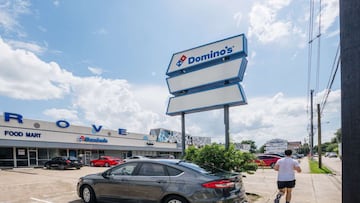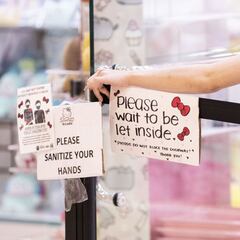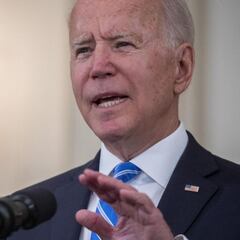Are stimulus checks and the Child Tax Credit payments leading to an increase in inflation?
Consumers are facing sharp increases in prices at check-out, but are these related stimulus checks and the new payments for the Child Tax Credit?


Many conservative policymakers and economists blame the third stimulus check and now the Child Tax Credit payments for driving up prices. However, when inflation from devalued currency drives up prices, the percent increase would normally be similar across the board.
We've paid people not to work.
— Senator Ron Johnson (@SenRonJohnson) July 22, 2021
Now we are printing more money we don't have.
Inflation is caused by too many dollars chasing too few goods.
That's where we are with the Democrats reckless tax-and-spend plan. pic.twitter.com/ry4SKcI9QV
That is not what is currently being seen in the US economy.
Since last June, the Consumer Price Index, which measures fluctuations in price, has increased six percent. This is the largest year-over-year increase in thirteen years. But, many economists monitoring these fluctuations are not shocked, as prices of many goods hit their lowest levels in many years in 2020.
The Consumer Price Index (CPI) is a measure of the average change over time in the prices paid by urban consumers for a market basket of consumer goods and services. Indexes are available for the U.S. and various geographic areas. Average price data for select utility, automotive fuel, and food items are also available.
Source: BLS "Consumer Price Index"
How has the pandemic impacted prices?
The pandemic had dramatic impacts on consumer spending: what people wanted to buy and when they wanted to buy it, and how often they would make purchases.
For example, those working from home bought new equipment to work more comfortably, and many parents spent more on childcare and educational materials.
All of these changes in preferences led to supply chain issues, shortages, and historical movement in prices.
Watch Rep. @AOC break down the GOP’s inflation talking points in 3 minutes pic.twitter.com/18Oi0N61R0
— NowThis (@nowthisnews) July 20, 2021
One product that has been impacted is gasoline. Few consumers could rejoice in the low prices seen early in the pandemic because many commuters were now working from home.
However, as preferences begin to return to their pre-pandemic status, consumers are feeling the impact of broken and bottlenecked supply chains.
Take gas. Several refineries in the United States did not survive the pandemic and opted to close down permanently. So now, as the economy reopens, people return to work or take a summer road trip, demand has surged. But, the industry’s ability to refine oil and transport gasoline has not reached the levels seen before the pandemic -- creating a shortage of supply.
What happens when there is high demand and short supply? Prices increase.
Additionally, part of the increases in prices seen in other sectors relates to the surging price of gasoline. Companies transporting their products from factories or warehouses to stores or households are passing along the increase in transportation costs to the consumer.
Which sectors have seen the largest increases?
The Bureau of Labor Statistics released the Consumer Price Index for June, which showed an average increase of .9% over May levels and a 6.1% increase since June 2020.
Industries and sectors with the largest increases include ‘Fuel Oil’ and ‘Gasoline,’ which both have increased in price by more than 45% compared to last June. However, the price of electricity and gas used at home only went up 6.5%.
The used car market has also seen dramatic price increases, with consumers paying more than 45% more across the sector. These increases have been widely reported on and relate to breakdowns in supply chains.
In an interview with Rochester First, a Garettt Wagner, a member of the New York State Society of CPAs, explained that in the car industry, "the big supply chain issue they’re having is microchips that go in the new cars. They can’t produce as many new cars as they want to, which is driving down the supply of new cars, which – in turn – drives up the price.”
Wagner went on to mention that “the demand for used cars is increasing and the supply isn’t, so that’s also driving up the price for those used cars.”
For folks like Wagner, these increases are part of the economy finding its equilibrium after severe economic shocks.
What has Jerome Powell said about inflation?
Chairpersons of the Federal Reserve, Jerome Powell, testified before Congress last week to update lawmakers on the economic recovery.
Many questions over inflation were lodged at Powell, who reiterated his belief that these increases in prices are temporary. Nevertheless, the Chairmen also stated that he is ready to begin increasing interest rates to curb inflation, should it be necessary.
Federal Reserve Chair Jerome Powell said inflation will “likely remain elevated in coming months" https://t.co/OCLIIYPTED pic.twitter.com/hMk5r3I2oL
— Bloomberg Quicktake (@Quicktake) July 14, 2021
Many economists warn against these increases saying they can disproportionately hurt low-income households.
However, ProPublica reported in April that increasing rates might help the average household increasing their savings and the return they see on their monthly statements. With higher interest rates set by the Fed, some banks offer higher interest rates on savings accounts.
When interest rates are higher, it means that the price of borrowing money is higher. To encourage bank members to save, banks can offer higher interest rates to incentivize members to keep their money from being spent. Then, the bank invests this money to make a profit and cover the higher interest rate they offered.
Related stories
Bolstering this point, the chief economist at Moody’s Analytics, Mark Zandi, stated that “High-wealth households do much better in a low-rate environment than lower-wealth households do.” Zandi says that these low-interest environments also contribute to inequality by “increasing the wealth of people who are well off.”
This week, decision-makers at the Federal Reserve are set to meet and discuss and adapt their monetary policy which could include the raising of interest rates.

